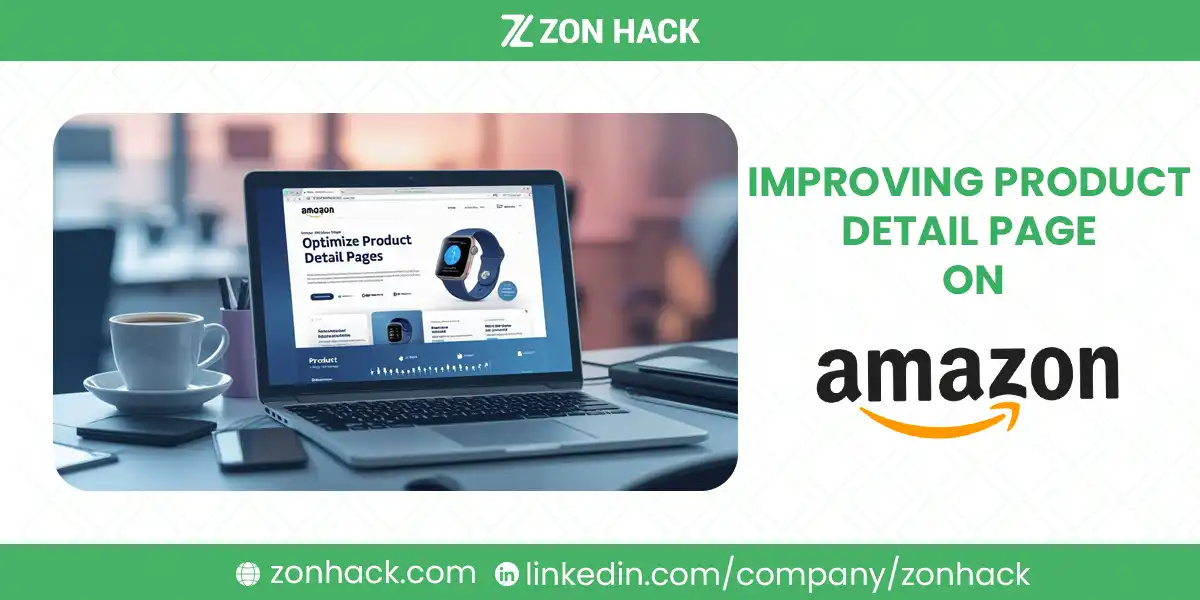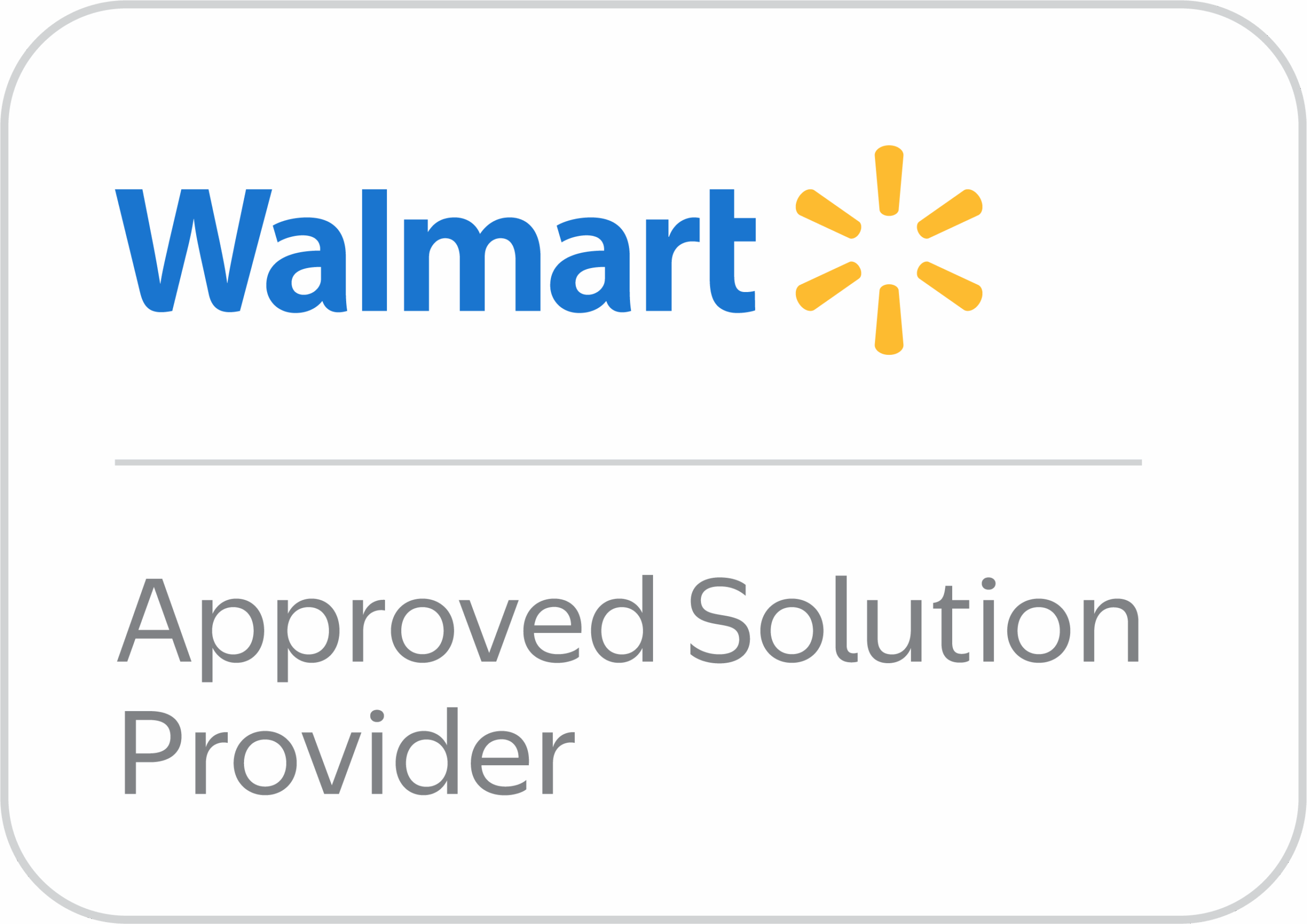When an Amazon shopper clicks on your listing, you have just seconds to convince them. They either scroll, click away, or convert.
What decides that outcome?
It’s not just your product. It’s your product detail page (PDP)—your digital storefront, sales pitch, product brochure, FAQ sheet, and trust badge all in one.
At ZonHack, we’ve optimized thousands of listings across categories. And here’s what we know: a great PDP doesn’t just look good. It converts better, ranks higher, and lowers your ad spend.
Let’s break down exactly how to improve your product detail page on Amazon, piece by piece, the way professionals do.
Why the Product Detail Page Is a Revenue Lever
Think of the PDP as a conversion battlefield. A high-performing PDP can:
- Increase your conversion rate (CVR) by 15–30%.
- Improve organic ranking through better keyword relevance.
- Make your PPC campaigns more profitable—because more clicks convert.
- Reduce returns and complaints by setting accurate expectations.
In short, a poor PDP leaks money. A good one multiplies it.
“The PDP is where your marketing ends and the customer’s decision begins. Nail it, and you win.” – ZonHack Strategy Team
Title Optimization: How Shoppers Find You (and Decide to Click)
The title is the most influential text field for both search visibility and click-through rate (CTR). It appears in search results, on mobile, and even in voice queries via Alexa.
But a title isn’t just about keywords. It’s about clarity.
A good title answers:
“What is this product?”
“Why should I click?”
“Does it match what I’m looking for?”
A Good Amazon Title Should:
- Start with the brand (if trademarked or relevant).
- Clearly describe the product type.
- Mention key features, specs, or use cases.
- Avoid fluff, punctuation marks, or salesy terms like “Best” or “#1.”
Here’s a simple format we use at ZonHack:
[Brand] + [Product Type] + [Key Feature or Size] + [Target Use or Benefit]
Real-World Example:
Bad: “Bluetooth Headphones – Best Quality – Cheap Price – Wireless”
Better: “Jabra Elite 7 Wireless Earbuds with ANC, Bluetooth 5.2, 30-Hour Battery – Sweatproof for Workouts”
That second one gets to the point. It’s readable, keyword-rich, and mobile-optimized.
Amazon allows up to 200 characters, but only the first ~70 characters show on mobile, so lead with the best info.
Bullet Points: Inform, Persuade, Convert
Bullet points aren’t just for listing features. They’re where you turn objections into confidence.
If your bullets read like technical specs, you’re missing the point.
Each bullet should answer a question the shopper is already thinking:
- “Will this fit me?”
- “Is it durable?”
- “Can I return it?”
- “How is it different from others?”
What Works Best?
Benefit-led bullets that are skimmable, keyword-supported, and user-focused.
Compare:
Technical: “Made of stainless steel. 10-inch length. 500°F heat resistance.”
Optimized: “Built to Last – Crafted from rust-proof stainless steel, our 10-inch tongs handle up to 500°F, perfect for BBQs or kitchen use.”
Short, clear, and helpful. That’s what wins the sale.
We recommend no more than 250 characters per bullet. Keep to 5 bullets. Avoid keyword stuffing or repeating info.
Product Description: The Overlooked Sales Section
Amazon hides this section below the fold, but Google doesn’t. And customers who scroll this far often want reassurance or detailed context.
Use this space to:
- Tell your brand story.
- Provide additional specs or warranty details.
- Address unique use cases or troubleshooting tips.
- Add long-tail SEO keywords naturally.
You’re allowed up to 2,000 characters. Use HTML for formatting (like bold, line breaks, etc.), but don’t overdo it.
If you have A+ Content, this section will often be replaced visually. But for indexing and mobile, it still matters.
ZonHack Pro Tip: We often repurpose customer Q&A and common review concerns into the description to pre-emptively solve buyer doubts.
Backend Keywords: The Invisible Advantage
While your shoppers don’t see them, Amazon’s algorithm does.
Backend search terms help your listing index for related queries and long-tail variants.
Amazon gives you 250 bytes—not characters, so avoid accented characters and duplicate phrases.
What to include:
- Synonyms (e.g., “tumbler” for “cup”)
- Alternate spellings (e.g., “color” vs. “colour”)
- Plural/singular forms
- Regional words (e.g., “onesie” vs. “baby grow”)
- Abbreviations (e.g., “LED”)
Avoid: Brand names (yours or competitors), ASINs, subjective phrases like “best,” or keyword repeats.
At ZonHack, we use keyword clustering and relevance scoring to populate backend terms that add up to 10x more indexed terms per listing.
Image Optimization: You Don’t Just Sell, You Show
Images are often more important than text. Shoppers don’t read first—they scan visuals.
That’s why your main image must be clean, high-contrast, and compliant:
- Pure white background (#FFFFFF)
- 85%+ of frame occupied by the product
- No logos, text overlays, or props
But it’s the secondary images that do the heavy lifting:
- Show product in use
- Display scale and sizing
- Highlight material or design details
- Show the box or packaging
- Include a lifestyle image with your target demographic
Great images reduce returns. They help shoppers visualize ownership.
Lifestyle Images: Turning Products Into Possessions
A photo of a camping stove is fine.
A photo of a camping stove lit on a rocky outcrop with two friends sipping coffee at sunrise? That sells.
Lifestyle imagery helps shoppers imagine the product in their life.
Use models that represent your target audience. Add props that reflect real scenarios. Keep it natural—don’t over-edit.
Our ZonHack creative team runs lifestyle shoot sessions tailored to your buyer avatar—whether it’s eco moms, CrossFit dads, or tech-savvy teens.
Infographics: Visual Conversion Triggers
Your competitors are saying the same things—durable, lightweight, powerful.
Infographics help you prove it visually.
These are images with text and graphics that explain:
- Features and benefits
- Size and dimension comparisons
- Compatibility (e.g., “Fits iPhone 12–15”)
- Warranty info
- What’s in the box
Keep them clean, not cluttered. Use fonts that are readable on mobile. Stick to your brand’s color palette.
One good infographic can answer 5 objections and close the sale.
Videos: Engage, Explain, Convert
Not every seller uses videos. That’s your edge.
Video content boosts conversion—by up to 80% in some categories, according to Amazon’s own internal tests.
There are 3 types that consistently perform:
- Demo video – Show how the product works.
- Unboxing video – Build confidence about what’s included.
- Lifestyle story – Add emotion and narrative.
Keep it under 90 seconds. Use captions. Optimize the thumbnail.
ZonHack can script, shoot, and edit custom Amazon videos that align with brand tone and product value props.
A+ Content: Where Visuals Meet Storytelling
If you’re a Brand Registered seller, A+ Content is a powerful asset.
Think of it as visual storytelling that replaces your standard description with rich modules—images, comparison charts, brand stories, and lifestyle elements.
And here’s the thing: shoppers spend more time on listings that include A+ Content. According to Amazon, it can boost conversions by 5–20%, depending on the category.
What Makes Great A+ Content?
It’s not about packing in fancy visuals. It’s about helping customers understand the product clearly and connect with the brand.
At ZonHack, we follow a proven A+ structure:
- Hero Image + Key Benefit (hook the shopper fast)
- Feature Breakdown (visually explain 3–5 differentiators)
- Comparison Chart (cross-sell or upsell related products)
- Brand Story (build emotional connection)
- Lifestyle Module (humanize your brand)
Standard vs. Premium A+ Content: What’s the Difference?
If you’ve been selling a while, you’ve likely seen interactive Premium A+ Content on top listings. It includes:
- Carousels
- Clickable Q&As
- Enhanced video modules
- Hover-to-zoom images
Premium A+ is currently invite-only and generally offered to top-performing brands. But the standard version is still powerful and free.
Even without Premium, when done right, A+ can:
- Improve time-on-page
- Reduce bounce rate
- Answer pre-sale questions visually
- Strengthen brand recall
Mobile Optimization: The Invisible Dealbreaker
More than 70% of Amazon traffic is mobile. Yet many listings are desktop-designed.
This is a mistake.
Here’s What to Optimize for Mobile:
- Shorter titles: Only ~70 characters are visible on mobile. Front-load the best keywords and benefits.
- Bullet point formatting: Use simple structure with caps in the headers (e.g., DURABLE BUILD – Designed for everyday use).
- Image resolution: Ensure images look sharp on mobile retina displays—2000×2000 px minimum.
- Video captions: Many mobile users watch with sound off.
- Tap-friendly design: Avoid cramming too much text into infographics that shrink poorly on phones.
ZonHack offers mobile-first audits to ensure every asset performs on the small screen—where the majority of buyers live.
Pricing Strategy: Don’t Just Compete. Convert.
Pricing is more than a number. It’s perception control.
Shoppers evaluate your product not in isolation but next to competitors. Your price needs to make sense in context.
If you’re priced too low, they question quality.
Too high, and they scroll past.
Tools That Help:
- Amazon Automate Pricing
- RepricerExpress
- Aura Repricer
- Seller Snap (for AI-powered adjustments)
But price isn’t just about automation. It’s about strategy:
- Use psychological pricing (e.g., $19.95 vs $20.00)
- Factor in total offer value (including packaging, warranty, bonus items)
- Monitor PPC ACoS and margins before cutting price to stay competitive
ZonHack clients often see 15–20% margin recovery just from optimizing their pricing logic and repricing frequency.
Winning the Buy Box: Where 83% of Sales Happen
Most shoppers don’t look past the Buy Box. If you’re not in it, you’re invisible.
Amazon’s Buy Box algorithm considers:
- Fulfillment method (FBA almost always favored)
- Price (including shipping)
- Order defect rate
- Inventory levels
- Shipping speed
- Customer feedback
Even as a private-label seller, you can lose the Buy Box if your metrics slip or prices fluctuate too wildly.
If you’re reselling, then winning the Buy Box is the business model.
ZonHack tracks Buy Box eligibility across SKUs and helps sellers recover lost Buy Boxes through performance fixes and pricing tweaks.
Managing Reviews: Build Trust, Improve Ranking
No amount of SEO or creative will save a listing with 2 stars.
But getting (and keeping) good reviews on Amazon takes both proactivity and compliance.
Here’s what works (without risking suspension):
- Use the “Request a Review” button in Seller Central (compliant and underused)
- Enroll in the Vine Program (for verified reviews from Amazon-vetted testers)
- Monitor review trends to spot recurring complaints and improve product/QC
Handling Negative Reviews:
Don’t ignore them. Respond politely, without offering incentives or blaming customers.
Real buyer concerns—when addressed quickly—can even turn 1-stars into 4s.
ZonHack integrates review monitoring into our full-service management. We alert sellers instantly when negative reviews appear and assist in crafting responses.
Creating a New Listing: Start With SEO and End With Empathy
Every new product starts with listing creation. But rushing this step leads to missed indexing, sloppy images, and low conversion from the start.
Here’s how to do it right:
- Go to Seller Central > Catalog > Add Product
- Choose “I’m adding a product not sold on Amazon”
- Choose your category wisely (this affects your visibility)
- Fill in title, bullets, description, keywords, and images thoroughly
- Upload videos and A+ content (post-approval)
- Launch with proper PPC campaigns and review strategies
At ZonHack, we use a “Launch-Ready Checklist” covering over 40 touchpoints—from keyword depth to image naming conventions—before pressing “Submit.”
Testing, Monitoring, and Continuous Optimization
Your PDP isn’t a set-it-and-forget-it asset. It’s a living document that needs regular updates.
We recommend a monthly audit that checks:
- Keyword ranking movement
- Indexing status for new keywords
- Conversion rate (CVR) changes
- Click-through rate (CTR) per image set
- A/B testing results (via Amazon Experiments or PickFu)
A single A/B test—like switching your main image—can lead to a 15–40% boost in clicks, which cascades into higher rankings and lower ad costs.
Data tells the truth. ZonHack uses real-time dashboards to evaluate what’s working and what’s not.
Frequently Asked Questions
What is the most important element of a product detail page?
The most important is the main image and title, because they control click-through. Once on the page, it’s about bullets, images, and social proof (reviews).
How often should I update my PDP?
We recommend reviewing it monthly, or any time you notice a drop in traffic or conversion.
Can A+ Content help with SEO?
Yes and no. The text in A+ is not indexed by Amazon’s algorithm, but it can influence Google SEO and improve conversions, which indirectly boosts organic rank.
Does video impact ranking?
Not directly, but video can improve dwell time and conversion, which Amazon’s algorithm notices.
Final Thoughts: Treat Your PDP Like a Living Asset
Most sellers create their product detail page once—and leave it.
But if you’re serious about scaling on Amazon, you can’t afford to.
Your PDP should evolve with:
- New customer insights
- PPC data
- Competitor positioning
- Customer feedback
- Seasonal trends
At ZonHack, our team treats your Amazon listing like a dynamic sales engine—constantly tuned, tested, and optimized to stay ahead of the curve.
Whether you’re launching your first product or scaling to 7 figures, a high-performing PDP is your foundation.
Let ZonHack help you build and optimize yours for conversions, ranking, and long-term brand trust.




